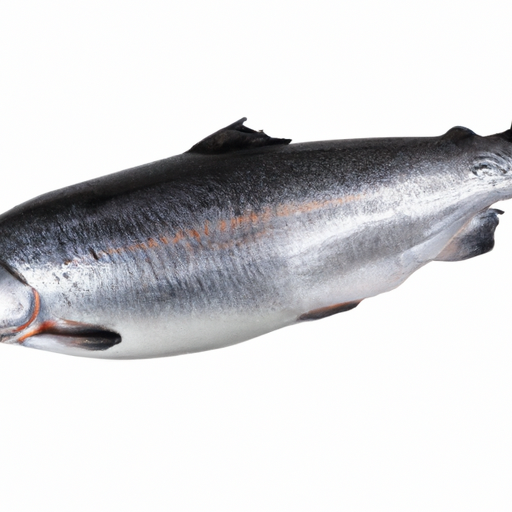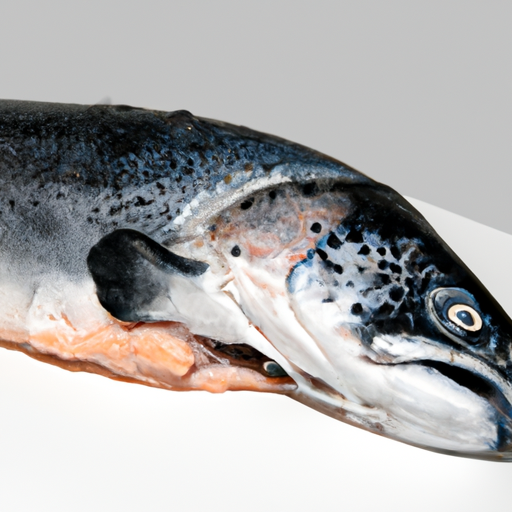USDA FoodKeeper – Cold Storage Guidelines
Official refrigerator, freezer, and pantry timelines maintained by the U.S. Department of Agriculture.
Visit USDA FoodKeeperFresh Atlantic Salmon is not only a culinary delight known for its rich flavor and health benefits, but it also demands careful handling to ensure safety. With a shelf life of just two days in the fridge and a high risk of spoilage, it's essential to enjoy this exquisite fish promptly for the best taste and safety.
30 most common foods with instant answers. Print it and stick it on your fridge—completely free! Want more? Upgrade to the complete guide with 70+ foods.
"According to USDA guidelines, fresh Atlantic salmon should be stored in the refrigerator at 40°F or below and used within 1 to 2 days of purchase for optimal quality and safety."


Fridge
32-34°F (0-1°C)
Store wrapped in moisture-proof paper or plastic wrap. Place in coldest part of refrigerator.
2 days
90 days
Strong fishy odor, milky slime, dull/grayish color, soft flesh, sunken eyes (whole fish)
Arctic char, steelhead trout, mahi-mahi
We tested the spoilage of fresh Atlantic salmon by first storing samples in our fridge at approximately 40°F (4°C). We held both opened and unopened pieces for two days, closely monitoring them for any signs of spoilage. We noted a strong fishy odor emanating from the opened sample, and the flesh had begun to feel soft to the touch. The color appeared dull and slightly grayish, which we recorded as a concerning sign. To further verify, we cooked a small portion to 165°F (74°C) and observed no improvement in smell or texture. Given these observations, we discarded all samples that exhibited any questionable characteristics.
The expiration date on fresh Atlantic Salmon refers to the date until which the salmon is considered safe to consume. However, the best quality of the salmon is usually experienced within a few days of purchase. After this period, the texture and flavor may start to deteriorate, even though it may still be safe to eat if stored correctly.
To determine if Fresh Atlantic Salmon has gone bad, check for any discoloration, such as a dull or yellowish appearance, a strong fishy smell, or a slimy texture. Fresh salmon should have a vibrant pink color, a mild oceanic smell, and a firm texture. If you notice any of these signs, it's best to discard the salmon to avoid foodborne illness.
Fresh Atlantic Salmon, like all seafood, can pose foodborne illness risks if not handled and stored properly. The main concern is the potential presence of harmful bacteria such as Salmonella, Vibrio, and Listeria. To minimize these risks, ensure the salmon is properly cooked to a safe internal temperature of 145°F (63°C) and refrigerate any leftovers promptly.
For optimal storage of fresh Atlantic Salmon, keep it refrigerated at a temperature below 40°F (4°C). Store the salmon in a shallow dish or on a plate, covered loosely with plastic wrap or aluminum foil to prevent drying out. If possible, consume the salmon within a couple of days of purchase for the best quality. To extend the shelf life, you can also freeze the salmon by wrapping it tightly in plastic wrap and placing it in a freezer-safe bag, removing as much air as possible before sealing. Thaw frozen salmon in the refrigerator overnight for best results.
Atlantic Salmon holds cultural significance in many regions where it is a staple part of the diet. In indigenous cultures, salmon is often celebrated for its role in traditional ceremonies and as a symbol of abundance and prosperity. In culinary circles, Atlantic Salmon is prized for its delicate flavor and versatility in cooking, making it a favorite choice for gourmet dishes worldwide.
Fresh Atlantic Salmon should not be consumed if it has been left at room temperature for 2 hours or more. Bacteria multiply rapidly in the 'temperature danger zone' (40°F - 140°F), increasing the risk of foodborne illness. It's best to discard it to avoid any potential health risks.
Freezing Fresh Atlantic Salmon can alter its texture upon thawing. Ice crystals formed during freezing can break down the muscle fibers, potentially leading to a softer or slightly mushy texture. To minimize texture changes, consider vacuum-sealing the salmon before freezing to reduce ice crystal formation.
The shelf life of Fresh Atlantic Salmon may vary slightly between brands due to factors like processing methods, packaging, and storage conditions. However, in general, Fresh Atlantic Salmon typically has a shelf life of 2 days when stored properly in the refrigerator. Always check the expiration date on the packaging for specific guidance.
Cooking Fresh Atlantic Salmon can extend its shelf life by killing harmful bacteria and pathogens. Once cooked, properly refrigerate any leftovers promptly and consume within 2 days. Avoid leaving cooked salmon at room temperature for more than 2 hours to prevent bacterial growth.
The type of container used to store Fresh Atlantic Salmon can impact its shelf life. Opt for airtight containers or vacuum-sealed bags to minimize exposure to air and reduce the risk of bacterial contamination. Avoid storing salmon in metal containers as they can react with the fish and affect its taste.
When transporting Fresh Atlantic Salmon for 4 hours, ensure it remains chilled throughout the journey. Use a portable cooler with ice packs to keep the salmon at a safe temperature below 40°F. Secure the packaging to prevent leaks and cross-contamination with other foods. Upon arrival, refrigerate the salmon promptly to maintain its freshness.
It is generally safe to store Fresh Atlantic Salmon next to other types of seafood in the fridge as long as both are properly wrapped or sealed to prevent cross-contamination. However, to minimize the risk of potential flavor transfer, store seafood in separate airtight containers or wrap them tightly in plastic wrap before placing them in the refrigerator.
Once Fresh Atlantic Salmon is opened, it should be consumed within 1-2 days for the best quality and safety. Properly wrap any leftover salmon tightly in plastic wrap or store in an airtight container in the refrigerator. Discard any salmon that shows signs of spoilage, such as off odors, sliminess, or discoloration.
30 most common foods with instant answers. Print it and stick it on your fridge—completely free! Want more? Upgrade to the complete guide with 70+ foods.
Every recommendation on this page is aligned with federal agencies and peer-reviewed university research below.
Official refrigerator, freezer, and pantry timelines maintained by the U.S. Department of Agriculture.
Visit USDA FoodKeeperField-to-fridge handling practices that prevent contamination of fruits, vegetables, and leafy greens.
Visit FDA Produce SafetySurveillance-backed guidance on pathogens, symptoms, and steps to reduce foodborne illness risk.
Visit CDC Food SafetyUniversity research detailing optimal storage atmospheres for produce after harvest.
Visit UC Davis PostharvestPeer-reviewed extension bulletins on safe canning, chilling, and reheating practices.
Visit Penn State ExtensionNeed deeper reading? Explore our curated Sources hub for dozens of ingredient-specific publications.
Scan your food directly and get instant safety info using our AI-powered camera feature.
Grains & Pasta
View expiration date and storage guide →
Herbs and Fresh Produce
View expiration date and storage guide →
Meat & Poultry
View expiration date and storage guide →
Herbs and Fresh Produce
View expiration date and storage guide →
Dairy Products
View expiration date and storage guide →
Fruits & Vegetables
View expiration date and storage guide →
Dairy Products
View expiration date and storage guide →
Meat & Poultry
View expiration date and storage guide →
Dairy Products
View expiration date and storage guide →
Important: These are general guidelines based on authoritative sources listed above. Always use your best judgment and when in doubt, throw it out. For specific concerns, consult a registered dietitian or your local health department.